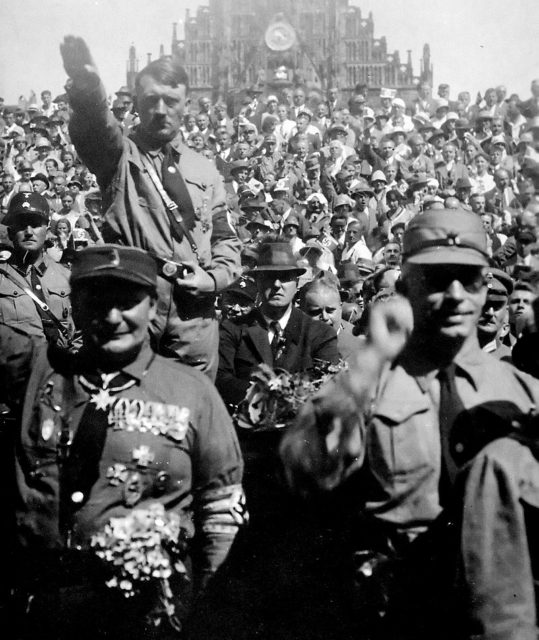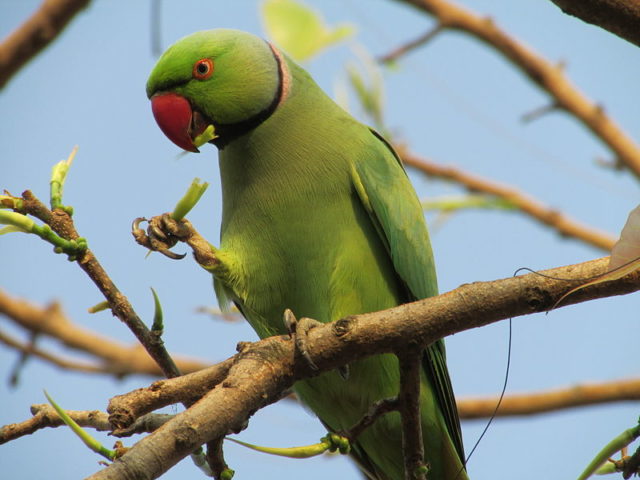
It was early 1949 when Munich’s Hellabrunn Zoo paid DM 120 to purchase a 15 year old white, female parrot. The parrot’s name was Laura and it was being sale by a dealer in Hamburg. In those days this was seen as a large purchase for the zoo. It was no secret that the zoo was struggling to remain open to the public due to economic struggles. Despite the finances, the zoo officials opted to go forward with the purchase in hopes that it would be popular among the children. The parrot even had potential to entertain the crowds by “talking” as many parrots learn to do. The money was paid, and Laura the parrot was put into a newly renovated cage.
In the first week at the zoo, Laura did not articulate any intelligent statements. The staff began to worry that she might just not be that talkative. Either way, she was a beautiful bird to look at. However, the second week unfolded very differently. Laura seemed to overcome the initial struggle with shyness and demonstrated her real vocal capabilities. The abilities turned out to be rather unique.
Her caretaker, Joachim Herzner, was the person to hear Laura speak her first phrase. It happened while Herzner enter the cage one morning to provide breakfast. The parrot perked up, moved her head up and down with excitement and let out a cheerful “Heil Hitler!” Not surprisingly, the caretaker looked at the parrot with utter disbelief; confused as to what he just heard. But then Laura repeated the sentence again, “Heil Hitler!
A Celebrity Nazi Parrot
It did not take long to figure out that “Heil Hitler” was in fact Laura’s favorite phrase to say. Whenever someone approached her she repeated it loudly over and over again throughout the day. It did not matter if it was young children or the American soldiers who frequently visited the zoo. The zoo officials were beyond embarrassed, especially since the zoo took pride in being so overtly against the Nazis and their ideology.
There was a famous incident that took place near the end of the war. The Wehrmacht decided to use an overturned tram to block off a local bridge that led into the city. The zoo heard about this and responded by marching out one of its elephants. The elephant named Lelabit was tasked with removing the blockade. The last thing that the zoo wanted associated with its reputation was anything pro-Nazi. It would be grossly undeserved and only due to the actions of one rogue parrot.
Laura’s unique talent quickly spread. The European edition of the American military paper Stars and Stripes did a special feature about the parrot on January 29th, 1949. The story focused on the parrot’s inability to stop “Heiling Hitler”. It only took a couple of days for the story to be reprinted in papers all over the world. Laura was now a known celebrity around the world.
Various editorialists opined about the Nazi parrot and what it symbolized. The Christian Science Monitor described Laura’s trick as a “weird cacophony of the comic and sinister”. The Mansfield Ohio News Journal declared that it was, “poetic justice that a parrot should be the last surviving public spokesman for the beliefs of Hitler and his ruthless henchmen [because] the man who would make slaves of people first tries to train them parrot-like to repeat what he tells them.”
All of the attention given by the media prompted large and eager crowds to visit Laura at the zoo. People assembled around her cage, and even offered her treats to encourage her to verbalize her famous line. Laura had undoubtedly become the main attraction at the zoo. The zoo officials took this as a bitter pill to swallow. The zoo might have had anti- Nazi history and sentiments, but it had accidently provided a large venue for a “cheerleader for the führer.”
Parrot De-Nazification
Inadvertently purchasing a Nazi saluting parrot on display was certainly embarrassing for the zoo, but it also made officials worried about possible legal ramifications. When World War II concluded, the Allied forces established a plan of “denazificaiton” in Germany. The act of displaying Nazi symbols such as the swastika, or demonstrating the Nazi salute became punishable by up to three years in prison. Therefore, it was possible that the zoo was breaking the law with a criminal act by keeping Laura on public display. The caretaker became concerned that he would be forced to kill the parrot.

The zoo decided to be proactive and consulted the de-nazification authorities about Laura’s legal status. They confirmed that having a parrot that saluted the Nazis was a “thorny issue”. Obviously, government lawyers had not taken something like this into consideration when drafting the plans for denazification. In the end, the authorities determined that Laura did not pose an obvious threat. The parrot was allowed to stay on display so long as the caretaker attempted to denazify her.
It was a favorable ruling, but there was one problem for Herzner who had no clue how to go about accomplishing such a task. With time, he came up with a multifaceted strategy. He resorted to laughter to start. Whenever Laura “Heil Hitlered” he laughed loudly in her face, hoping this would hurt her feelings. At the same time he used love by getting a younger male parrot named Max. He introduced them, and placed the male into her cage. The two parrots got close quickly, and this finally pushed her to expand her arsenal of sayings. If Max was not around she would say, “Where’s my Max?” Whenever he came back she would say, “Here’s your Laura.”
The zoo visitors undermined most of Herzner’s efforts because they wanted her to keep saying the signature phrase. She kept on saying it, and then more bad news came to light. Laura was not the only ‘Nazi’ follower at this zoo. It was during a Sunday display for school children when an elephant named Stefi heard a person say “Heil Hitler”. The elephant immediately raised her trunk in an attempt to imitate the Nazi salute. Once the children realized that Stefi would repeat the same trick, they all felt compelled to say “Heil Hitler”. Suddenly, an educational event had been described as a “grotesque performance” according to the media. The mortified zoo officials could only explain this outbreak of Nazi- saluting animals to “diehard Nazis” who must have trained these animals during the war.
Laura Disappears
On February 1st, 1949 Laura mysteriously disappeared from her cage. The zoo reached out to the media to alert them that the parrot had been stolen. It was at the height of her fame, and her kidnapping made headlines around the world once again. Fortunately, after a few weeks she was just as unexpectedly and secretly returned to her cage. It is unclear if she was actually stolen, or if the zoo just moved her out of the cage in hopes the public fascination would die down. The scant press reports did not help in determining what really happened.
The initial news of Laura’s disappearance did inspire aid from an unlikely source. There was a group of dancers at the Philadelphia Latin Casino that became aware of what happened. They felt that the Munich Zoo needed to obtain a new parrot. After the dancers pooled their money, they bought a green parrot named Schnozzola. They shipped the parrot to Germany on a TWA plane. The zoo was thrilled to accept the gift, and reported that in just a few weeks that Schnozzola was a “whimsical humorist.” The two signature phrases were, “I love my wife, but oh you kid,” and “Buy American all the way.”
In the end, the Munich Zoo kept two parrots. Laura was the pro- Nazi parrot, and Schnozzola, a pro-American one. There was finally political balance taking place in its parrot cage. Furthermore, the political views of the parrots never invoked media coverage or global headlines again.